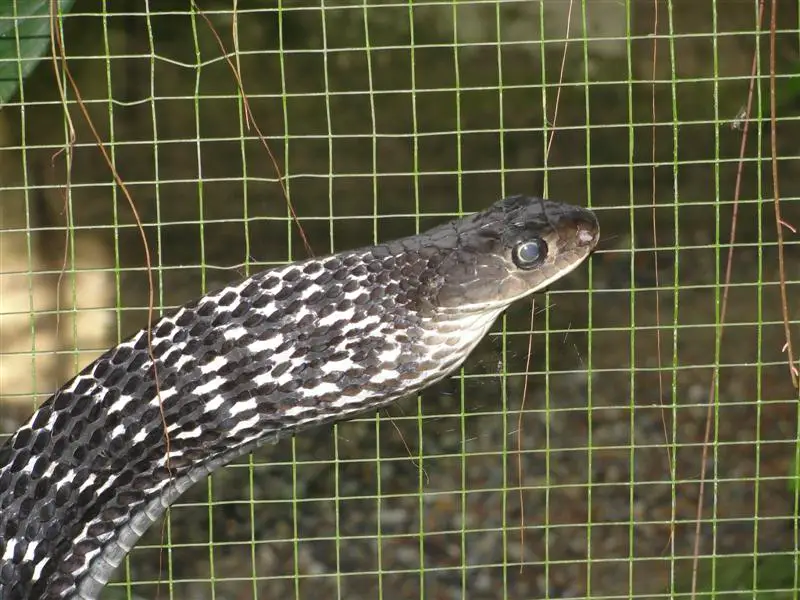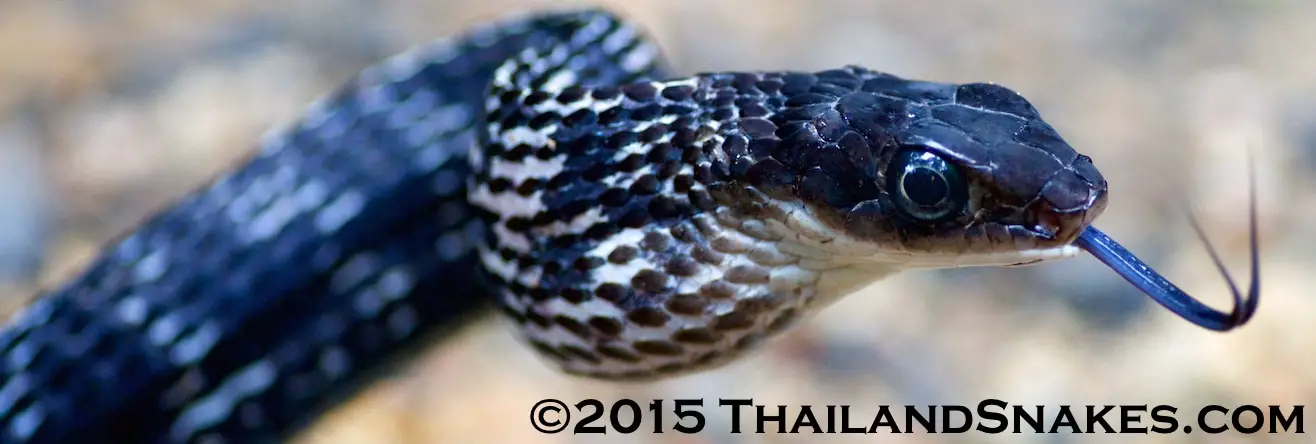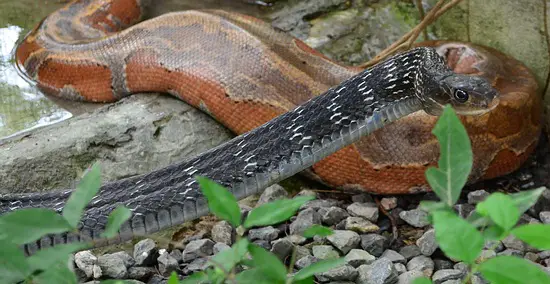Keeled Rat Snake (Ptyas carinata)
Keeled Rat Snake (Ptyas carinata)
(Page Updated: 21 June 2023)
Thais say: Ngoo noo
Length: These snakes can reach almost 4 meters in length, though they are much more common at the 2-meter length.
Range: In Thailand, the keeled rat snake is found all over the country. I have found them in Krabi, Surat, and the Sisaket province in Northeast Thailand near Ubon Ratchathani.
Habitat: Lowlands and hilly rainforest type habitat primarily. The last 5 of these snakes I saw were all found at less than 200 meters elevation, and in the forest on and just off hiking trails during the day. It is worth noting that the snake in the embedded video below was found at 100+ meters elevation climbing a limestone cliff.


Active Time? I have only found these active during the daylight hours (diurnal), though one was found thirty minutes after sunset crawling on limestone rocks at 130 meters elevation up a steep hill. Another snake enthusiast found a sleeping 2.5-meter snake sleeping at 2.5 meters elevation on some leaning bamboo next to a path at the base of a limestone mountain.
Food: Primarily rats and other small mammals. Probably frogs, lizards, and other snakes. Probably they are quite opportunistic and eat whatever presents itself.
Defensive Behavior: These snakes are quite adept at defending themselves. They have almost endless energy and don’t seem to stop after 10-20 strikes as most snakes do, they can continue more than 60 times.
Venom Toxicity: These are rat snakes, they have venom in their saliva, but it does not act on humans to cause serious envenomation. These are aglyphs – having no fangs. Ptyas carinatus venom is rich in neurotoxic 3FTx and affects animals they eat, but not humans.
Offspring: Little is known. I’ve seen one juvenile that had a lot of green in the area around the neck and body.
Notes: I have seen about three dozen of these snakes in the wild – usually forest bordering the sea. They are very fast on the ground, and I have never seen them climb trees, but I have seen them easily climb the sides of large limestone cliffs, poking their heads into holes to see what they might find to eat.
These snakes are sometimes mistaken for the king cobra (Ophiophagus hannah) as they are about the same size, general shape and tails, and they even have some banding that can be mistaken for the king cobras.
These snakes are active throughout the daylight hours and are best caught by tailing them while they are going through brush so they cannot twist around and bite you as they strike. These snakes are one of the few species in Thailand that can hiss when aggravated.
Today on the trail up a mountain in the Nong Talay subdistrict of Tub Kaak in Krabi province, I found and briefly caught a 1.5 m specimen and he hissed repeatedly as I tailed him and he tried to twist through the small bushes to get away.
Other snakes that make noises with their mouths are: Burmese pythons, King cobras, Monocled cobras, spitting cobras of both types (equatorial and siamese), and the Russel’s viper (Chain viper).
This rat snake at maximum gets to be over 3 meters long. The images here are of an almost 3-meter specimen from southern Thailand. Keeled rat snakes have a big bite and a big reach when striking, so be careful. The teeth and jaws on this large rat snake are very strong and they can cause some scarring if infected.
Keeled Rat Snake Scientific classification
Kingdom: Animalia
Phylum: Chordata
Class: Reptilia
Order: Squamata
Suborder: Serpentes
Family: Colubridae
Genus: Ptyas
Species: carinatus or carinata
Binomial name: Ptyas carinata
Günther, 1858

